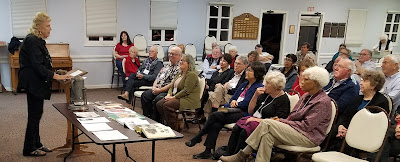 |
| JoAn Burdick at the Calico Saloon, Knott's Berry Farm, June 1954 |
My introduction to JoAn Burdick Gottlieb was a single remarkable photograph.
Soon after I was hired as the Assistant Archivist at the Orange County Archives, in 2003, we became the repository of Knott’s Berry Farm’s historical materials. In trying to identify, date and organize the thousands of photos we pulled from every nook and cranny of the Farm, I needed to identify the places, things, and especially the people depicted therein.
Naturally, among the photos of Knott’s Ghost Town were countless images of grizzled prospectors, train robbers, square-jawed sheriffs, bartenders, and high-kicking can-can dancers. Almost all of these images made Ghost Town itself the focus of attention. All except for one 1954 photo of a tall beautiful can-can dancer standing atop the bar in the Calico Saloon. That dancer – wearing a snazzier costume than the ones Knott’s usually supplied – was clearly the sole focus of the photo and Ghost Town just happened to be the backdrop. The dancer’s name turned out to be JoAn Burdick.
Most of the Ghost Town crew from that era were long gone by then, and I didn’t make an effort to track her down. Instead, she found me.
 |
| (L to R) The author with JoAn and her dear friends Kathy and Bill Couture at the Orange County Historical Society, Feb. 7, 2019. |
If JoAn never told you about the high points of her life, many other tributes since her death have done fair job: Dancing, pageants, parades, Knott’s Berry Farm, Las Vegas, celebrities, her beloved Bernie, her dance and baton twirling school, motherhood, friends, and community volunteer work. But with all due respect to her many accomplishments, they aren’t the reason her passing generates such an avalanche of fond tributes.
Why then?
Because JoAn enthusiastically brought love and a glowing positive attitude to any room she entered. Because she fully immersed herself in being an active part of the community. (Something that her wonderful friends Kathy and Bill Couture helped facilitate in her later years.) And because she was a cheerleader for so many of us – sincerely and effusively telling us we were doing a great job and gushing about our successes to anyone who would listen. And no, I'm not just talking about me. I Everyone needs a JoAn or two in their lives.
 |
| Halloween, 2021 at the Anaheim Public Library. |
In the years after we met, JoAn and her friends became regulars at meetings of the Orange County Historical Society, where I serve as president and program chair. She was also a regular at the Anaheim Historical Society which had a lot of overlap with another of her favorite community organizations, the Anaheim Halloween Parade. (Causes that are close to my heart as well.) Having played a role in the parade during its halcyon years, in the 2010s she played an even more active role as the parade was revived from the brink of death and once again made a charming and vital part of the community.
JoAn’s passing drew immediate tributes from dozens of individuals on social media, from community organizations, and even the City of Anaheim itself. A memorial I attended turned out to be a semi-secret event because the organizers knew that a publicly-announced memorial would bring out half the city, overwhelm the Anaheim Ebell Clubhouse, and possibly draw unwanted attention from the Fire Marshall. As it was, there were still maybe 175 people there. After a short memorial program and lunch, JoAn’s friends and family – one at a time -- volunteered their memories of her. Altogether, it went on for three hours. It easily could have gone on longer, but I assume the Ebell ladies wanted their hall back eventually.
I doubt I'll ever light up a room the way JoAn did. And I'll certainly never be able to twirl three batons at once while marching down Broadway. But I hope a little of what made JoAn special has rubbed off on everyone who knew her -- including me.
 |
| JoAn speaks at the Orange County Historical Society, 2019. (Photo by author) |
Author's note: JoAn passed in January 2023, so this post arrives awfully late. It was written for inclusion in a booklet full of tributes to JoAn being assembled by a mutual friend. Ultimately, that project did not move forward, so -- considering what a fixture JoAn had become in the local history community in recent years -- I thought it appropriate to post it here instead. This little article is in no way intended to serve as a proper obituary, covering the breadth and depth of her life experiences. Rather, it's just a reflection of the JoAn that *I* knew. I will leave other stories to those who know those stories better.






